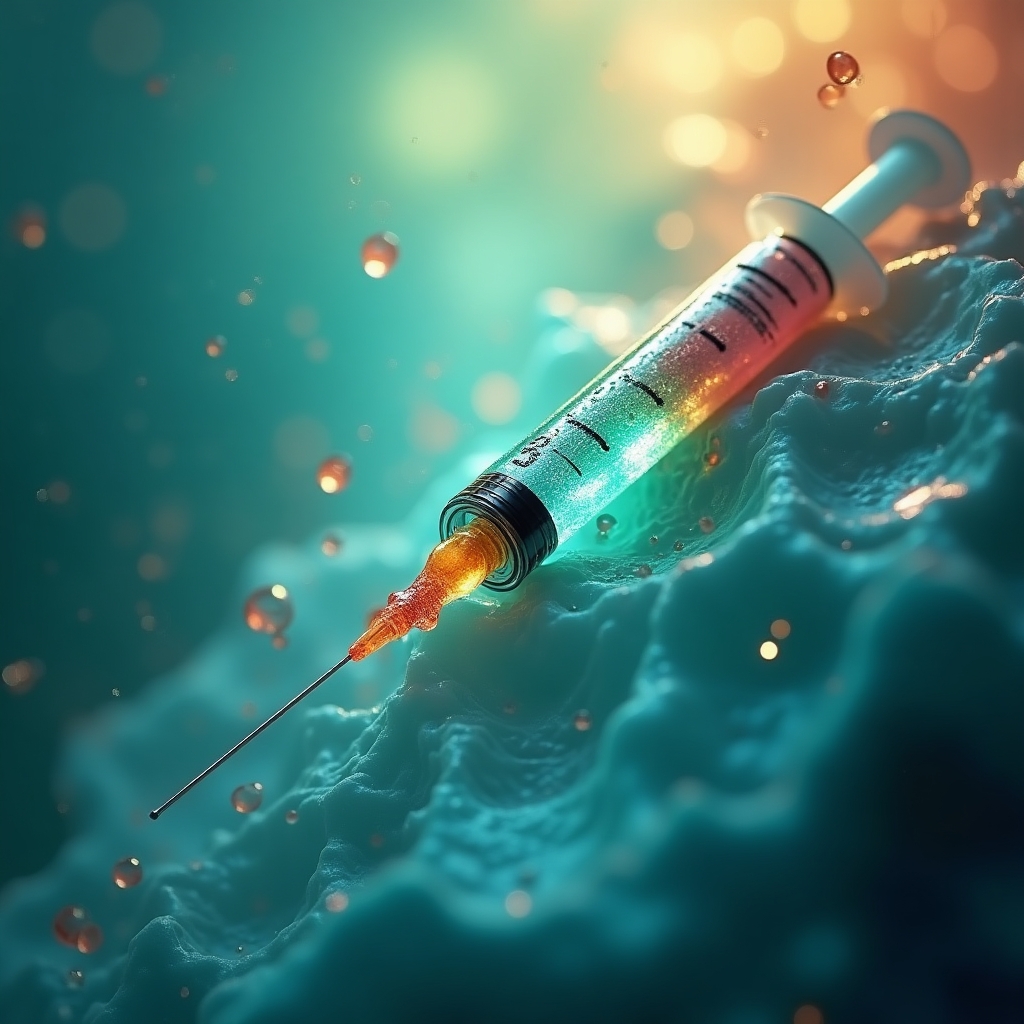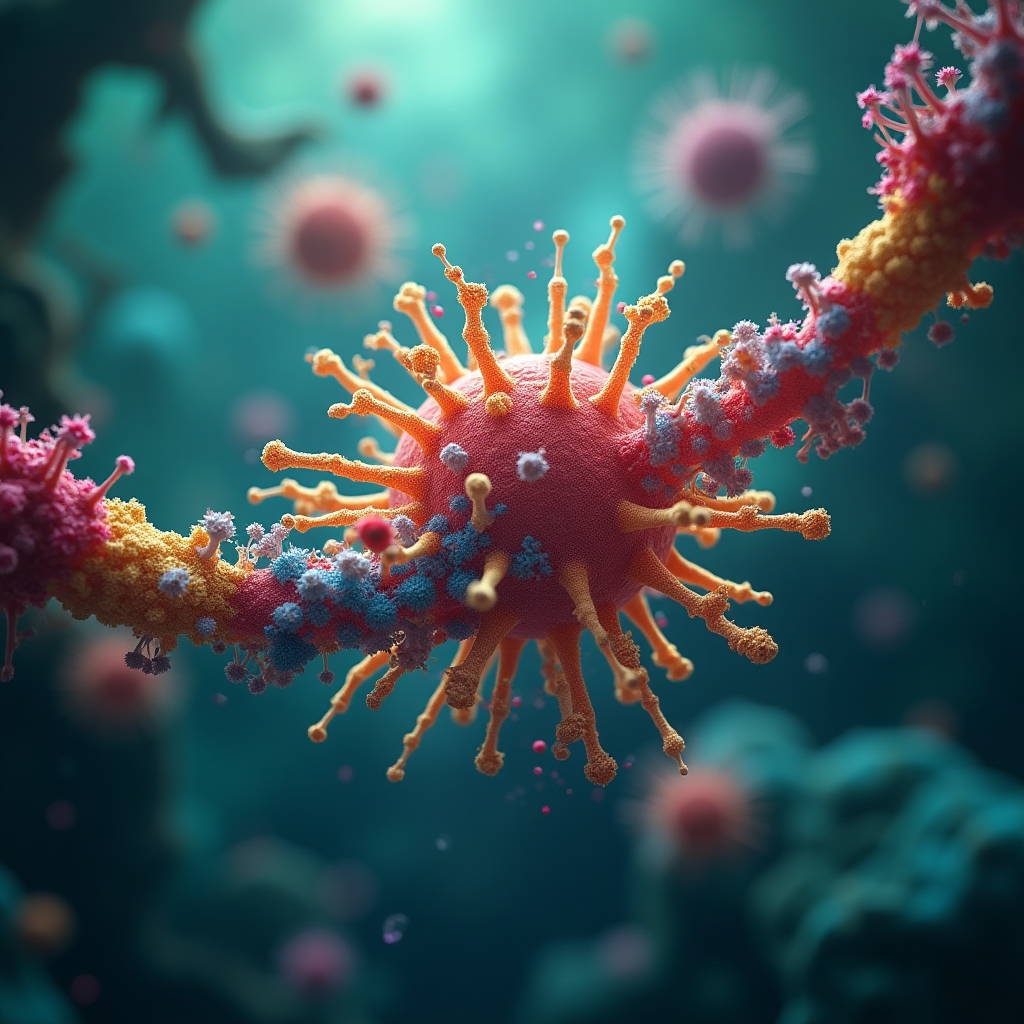In the realm of medical science, breakthroughs often promise to reshape the way we approach health and healing. Among the latest advancements, a team of innovative scientists from Sweden has developed what could be a groundbreaking solution for treating burns and wounds: "skin in a syringe". This system, incorporating a gel filled with live cells, shows potential not only in healing but also in reducing scarring, opening a new chapter in regenerative medicine.
iN SUMMARY
- 🧪 "Skin in a syringe" contains live cells and is designed to heal wounds without scarring.
- 💉 The innovation combines fibroblast cells on gelatin beads with hyaluronic acid gel using click chemistry.
- 🔬 A parallel advancement includes elastic hydrogel threads that can carry fluids, aiding tissue development.
- 🌐 The development was accomplished by scientists in Sweden, showcasing a leap in regenerative medicine.
What is "Skin in a Syringe"?
Think of "skin in a syringe" as a transformative application designed to streamline the complex process of skin regeneration. The core idea involves a specialized gel infused with live fibroblast cells. These cells are crucial in the skin's healing process, as they help rebuild connective tissue. The product, developed through state-of-the-art "click chemistry," ensures that the cells remain viable and effective upon application.
This inventive gel not only acts directly on wounds but can also be employed in 3D-printed skin grafts, offering a customizable approach to skin replacement and healing. According to Science Daily, it's a significant leap from traditional methods that largely focus on treating and covering wounds rather than regenerating functional dermis.
The Science Behind the Gel
The active component of this innovation lies in its combination of fibroblast cells and gelatin beads, all within a supportive environment made of hyaluronic acid gel. Hyaluronic acid is a naturally occurring substance in the body known for its ability to retain moisture, which signals rapid and effective healing for wounds (Mayo Clinic, https://www.mayoclinic.org).
"Click chemistry," a method that allows for joining small units to form more complex structures, plays a pivotal role. This technique, pioneered by scientist K. Barry Sharpless, provides stability and ensures proper cell function throughout the healing process (Nature, https://www.nature.com).
A Parallel Path of Innovation
While the "skin in a syringe" holds promise, researchers have concurrently developed elastic hydrogel threads. These threads, capable of forming tiny channels, can transport fluids and play a critical role in the creation of artificial tissues and organoids. This innovation paves the way for advancements far beyond dermatological applications, potentially influencing the creation of artificial organs and complex tissue systems.
The elasticity and resilience of these hydrogel threads mimic natural pathways in biological tissues, offering a practical substrate for developing complex, body-compatible tissues (Journal of Biomedical Materials Research, https://onlinelibrary.wiley.com/journal/10974636).
Impact on Burn Victims
For those who suffer from severe burns, the healing process often involves prolonged hospital stays, costly treatments, and an unfortunate side effect: scars. This new injectable skin could offer a much-needed alternative. By reducing scarring and promoting faster healing, patients could potentially return to their normal lives more quickly and with less psychological trauma.
Statistics reveal that every year, approximately 11 million people worldwide require medical attention for burns. The introduction of "skin in a syringe" could potentially revolutionize treatment protocols and outcomes significantly.
Practical Steps Toward Adoption
- Clinical Trials: Adjustments and trials remain critical to ensure the safety and efficacy of the gel across diverse populations.
- Healthcare Integration: Hospitals must adapt infrastructures and protocols to incorporate such treatments efficiently.
- Training Programs: Medical personnel need comprehensive training to handle these innovative therapies effectively.
- Safety Regulations: These products must receive extensive safety evaluations and regulatory approvals before widespread use.
Linking Global Communities
As research continues to develop, it's important for cities like Stockholm, Sweden, where this research is incubating, to share their insights worldwide. In Canada, city portals such as Toronto play an essential role in disseminating innovative health news domestically. Similarly, cities like Vancouver emphasize current advancements, ensuring communities benefit from global medical progress.
Looking Ahead
The transformational nature of "skin in a syringe" provides a beacon of hope for millions who sustain skin damage. As we observe these innovations unfold, it's worth asking: How will these advancements truly alter patient care worldwide? Might this approach extend to other medical fields, offering a holistic answer to tissue regeneration challenges?
Join the iNthacity community, become a part of the Shining City on the Web, and share your thoughts. Could these breakthroughs inspire your local community? How will they change perceptions of healing and medicine over the next decade? We'd love to hear your thoughts in the comments below!
In the spirit of hope, remember: Every scientific discovery brings us one step closer to unlocking the secrets of nature. The journey of healing is boundless, and who knows—maybe the next marvel in medicine is just a heartbeat away!
Disclaimer: This article may contain affiliate links. If you click on these links and make a purchase, we may receive a commission at no additional cost to you. Our recommendations and reviews are always independent and objective, aiming to provide you with the best information and resources.
Get Exclusive Stories, Photos, Art & Offers - Subscribe Today!
























Post Comment
You must be logged in to post a comment.